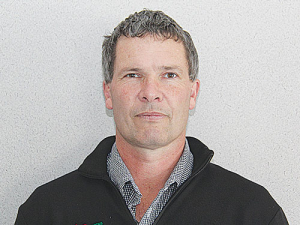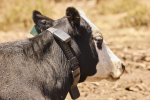In Australia, an economic assessment identified that it might cost Australian producers $50-$80 million dollars per year in productivity losses alone!
When to treat it, how to treat it, and what exactly needs to be treated aren’t always crystal clear.
Myth 1: If there are no signs or symptoms, you don’t have a liver fluke problem.
Before obvious signs of liver fluke occur, such as weight loss, scour or ‘bottle jaw,’ animals lose significant production.
It is also not always clear which farms have liver fluke.
It’s possible producers that should be treating for liver fluke aren’t, while some are treating for liver fluke, even though they don’t need to be. While many farmer’s monitor intestinal parasites to ensure selection of effective drenches and appropriate timing, liver fluke is less purposely monitored.
Liver flukes tend to be intermittent and irregular egg layers, which makes faecal egg count tests somewhat unreliable.
The most effective tests on the market are blood tests like the ELISA (Enzyme Linked Immuno-Sorbent Assay), which detects the antibodies animals produce in response to infection.
Myth 2: There is no risk of liver fluke in dry or drought conditions.
Because liver fluke larvae mature in water snails, it leads people to believe that they’re only present in wet or rainy conditions.
Liver fluke eggs hatch into larvae, which mature and multiply in the aquatic snail for five to eight weeks. Then tadpole-like larvae emerge from the snail and form cysts on vegetation. These cysts can last for months on the vegetation where water once existed – in a dry dam for example – putting grazing livestock at risk.
When addressing liver fluke, it’s important to consider the timing of treatment and not necessarily rely on weather conditions to assess risk. Treatment times depend on your specific region, because when temperatures are consistently above 10oC the lifecycle can continue. Moisture and temperature control the lifecycle and these vary significantly in NZ regions. In places like Northland for example, a general rule of thumb might be to consider treatments three times a year.
Late April to early May is the most important time as it is when liver fluke is most likely to be around two weeks old, which is its youngest treatable stage.
Following this, treatment in August / September when adult fluke that survived in the animal over winter start laying eggs again; treatment here targets adult fluke.
Sometimes you may need to treat again in January / February to eliminate infection livestock may have picked up through the spring and to prevent a significant adult load in the autumn.
Myth 3: All application methods are created equal.
While pour-on applications are quick and easy, they might not be absorbed as well as other routes. The treatment needs to be absorbed into the bloodstream and make its way to the liver, which is likely to be quicker for example when an oral or injectable fluke drench is administered.
Also critical is using a drench that minimises larval damage, killing larvae as early as possible. The time you save upfront during application doesn’t always pay off when considering the increased speed of an injectable or pour-on treatment.
Myth 4: The threat of resistance isn’t really that important.
Triclabendazole has been relied on as it gave the greatest efficacy against young fluke, minimising production loss; and has been present in many brands.
Research work conducted in Australia [Virbac Australia] has shown there is an emerging resistance to triclabendazole – an active used to treat liver fluke. Resistance was first seen there in 1995 and now is progressively increasing in frequency.
New Zealand identified possible triclabendazole resistance first in a case in Taranaki in 2009* and then confirmed on the same property in 2011. Since then, no serious studies have identified how prevalent the problem is. Farmers who suspect they have issues with fluke despite treatment should work with their veterinarian to investigate the status in their herd/flock and identify the best treatment.
Myth 5: Switching brands won’t reduce resistance.
To delay resistance, look for combination products that will do a better job of wiping out flukes, some products offer synergistic combinations with triclabendazole which work more effectively than triclabendazole alone [synergy proven for oxfendazole combination, suggested for Moxidectin combination]. Consider the use of an alternative non-triclabendazole treatment containing actives like closantel, clorsulon, nitroxinil or combinations of these.
To delay onset of problems, fluke treatment should be completed strategically at times as discussed above; avoid using triclabendazole products as routine monthly drenches. Also consider your land use, placing stock away from high risk areas [especially sheep and young cattle]. Graze high risk areas in late winter with adult cattle.
Whether you’re looking to start a program or already implementing a program, you should seek expert advice to assess what the best approach is for your livestock and farm. Your veterinarian can help you identify the problem and devise an actionable strategy to control liver fluke on your property.
* Hassell C – publication: Proceedings of the Society of Sheep & Beef Cattle Veterinarians of the NZVA, 2012 p 4.14.1-4.14.2, Jan 2012
• Richard Hilson is a veterinarian at Vet Services (HB) Ltd, with a serious interest in sheep and deer in particular. He is big on animal health management planning and often works with clients one on one to assist in fine tuning production systems.

















